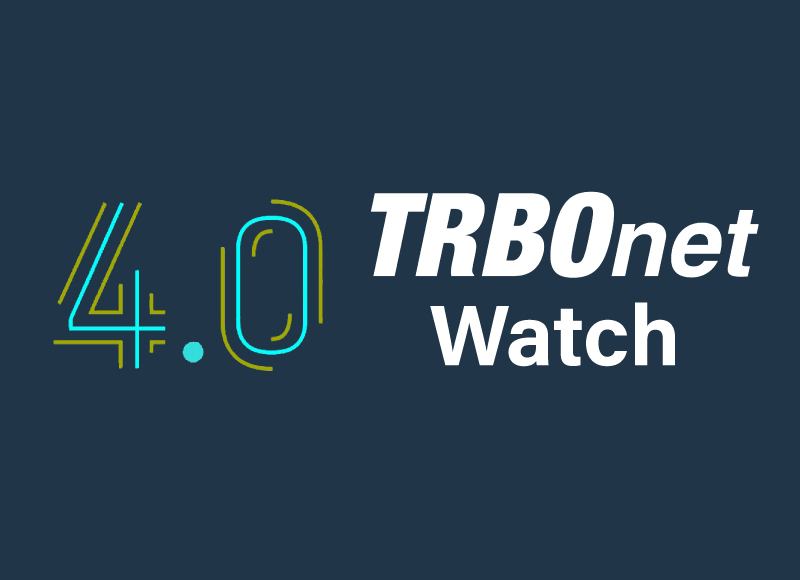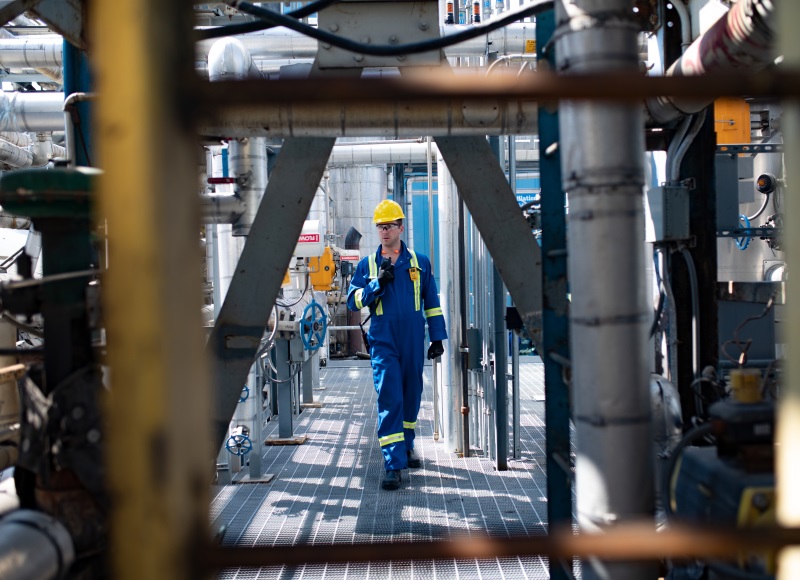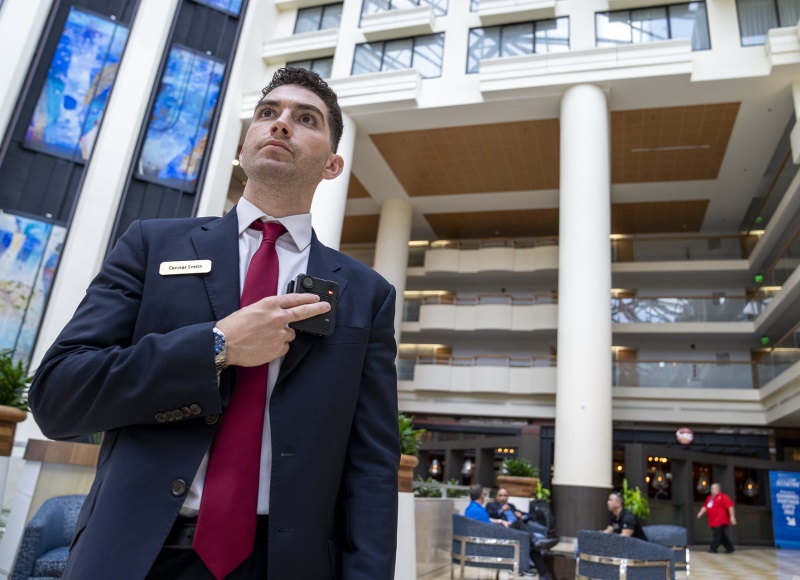

What are the misconceptions about two-way radio technology and how can this hinder an organisation’s choices?
 By Simon Bingham, Senior Account Manager.
By Simon Bingham, Senior Account Manager.
Over the last decade, the advancements made in digital radio communications technology has rapidly gained pace and so have the misconceptions surrounding it. Misconceptions can often hinder the decision making process for organisations, whether you are exploring the choices to acquire more devices, updating existing legacy infrastructure, or considering a different technology altogether.
The first steps are often a business case analysis. Often a multi-step approach there are key considerations factored in such as a detailed breakdown of your organisation’s requirements, expectations of the solution, and the environment the radio equipment will be utilised in. These decisions future proof your investment and give a visible return on investment from the initial switch on.
Once thought of as a ‘standalone’ technology, two-way radio can now unify and control other workplace processes resulting in teams connecting locally, nationally and globally (if required.) Often organisations get locked into a cycle of replacing hand portables as they are unable to withstand their work environment due to the poor build quality, seen as a failing they then look to migrate to other technologies. The current portfolio of radio devices Radiocoms supply and support offers options that are non-bulky and lightweight; some smaller than an iPhone or Android device, with robust casings and IP ratings for varying workplaces.
Cloud based software applications have also become a vital aspect in the decision making; adopting such software brings unity. Control can be carried forward into your radio system for processes such as alarm management, job ticketing, guard tours and dispatch control, with both on and off-site multi-device connections.
1. Mobile/Cell phones are better than two-way radios.
Firstly, it is essential that the right equipment is recommended for the user environment. There is a misconception that the clarity of a two-way radio broadcast does not deliver as well as a mobile phone, which operationally can be a cause for concern. Modern DMR two-way radios offer immediate sound transfer by transmitting the sound digitally and cancelling background noise, transmitting only clear audio.
Secondly, comparatively speaking, mobile/cell phones can not only be less reliable in regards to coverage, but they are also potentially more expensive and even dangerous in some work environments. The most efficient and effective communications strategies incorporate the use of two-way digital radio due to their encryption, durability and longer battery life.
2. Two-way radios are expensive.
When focusing on migration or the implementation of additional features often cost can be the leading consideration. With an estimated life span of 5-7 years, in the long run, DMR two-way radios are often a more cost-efficient option when compared to other technologies. The result is a return on your investment, higher user satisfaction and all within an agreed, outlined budget.
It is worth noting, PMR446 equipment can be advantageous for some organisations; however, this is generally in business settings outside of cities (where interference can be problematic.) Non-licensed equipment is usually placed in small business settings such as primary schools, restaurants, garden centres, retail in store communications or holiday camps, for example.
Aside from the initial equipment purchase costs and a one-off payment for an OFCOM licence (Radiocoms, we will take care of all the paperwork involved in obtaining your radio licence on your behalf), there are no additional re-occurring, monthly outlays for radio technology compared to other communication solutions.
Purchasing equipment is not the only option. You can hire radio equipment on a temporary or long-term basis for a fixed weekly rate; hiring through OPEX budgets can provide a viable alternative where CAPEX funding is unavailable. Hire rates are dependent on the required term; for example, a weekend hire charge may be slightly higher than hiring the same radios for a longer duration. Audio accessories, chargers, and repeaters (boosters) are also available to hire.
3. Two-way radios do not offer extra features/applications.
It is common practice for employees to use radios throughout their entire workday but they then look to other technologies to assist in different aspects of their job role. Modern two-way radios have many operational & safety features that can be activated as standard. Additional add on software applications can assist in the consolidation of daily or site management tasks; these can often justify the cost of a radio system upgrade.
Here are just some of the areas data applications can help in:
Fleet Management
Dispatch Console
Work-Order Management
System Management
Alarm Management
Personnel Tracking
Email/Text Gateway
4. The coverage doesn’t meet my requirements.
One of the most common questions a client asks when they are considering two-way radio is – how far do they communicate? There is not a ‘one solution’ that fits all scenario, and there are a number of factors to consider. Ultimately it is dependent on the required coverage footprint and the user environment. Coverage enhancements are available to connect multiple sites or improve in building/localised footprint.
- If extensive coverage is required, repeaters can be IP linked to provide wide area coverage on digital radio systems so whole cities can be covered or different sites across the country can be connected over the internet.
- Repeaters are used to extend or boost radio coverage. When obstacles are in the way of two-way radios, or when the distances between the receivers are too far away from each other, coverage degrades. Repeaters provide clear paths around obstacles and shorten the distance between radios to overcome these coverage problems.
- Antennas work in harmony with repeaters. They act as a directional force for the signal that is being boosted by repeaters. We can provide many different antennas that can suit any signal requirement
- Leaky feeders are antennas designed as feeder cables. They boost coverage to areas without a signal, such as underground or in basements. Having conducted detailed engineering coverage surveys, our engineers will know exactly where to install radio equipment to get the best two-way radio system coverage, providing you with seamless communications across the entirety of your premises.
5. We don’t need a dedicated supplier.
Having a trusted communications provider to partner with is key to the management of your existing radio system, for the support in the deployment of a new radio solution or when upgrading critical infrastructure.
While your team are the experts on your organisation, by leveraging on your chosen radio communication partners technical expertise and project experience, navigating your way through the options available no longer need to be an obstacle. They can make recommendations for existing systems or design a radio communication migration plan specifically for your business model, that evaluates usability for your environment and eliminates ‘the trial and error’ scenario that can slow down team productivity and waste essential budget.
In summary
Despite the misconceptions mentioned above, radio technology is still a leading choice for both the private & public sector. Opening up the opportunities for your radio system Radiocoms can help you keep pace of digital advancements and concepts.
Latest News From Radiocoms
Let’s start a conversation
If you would like further information, or to discuss your requirements onsite:
Book An Appointment | Arrange A Quotation | Call 033 3939 0022







